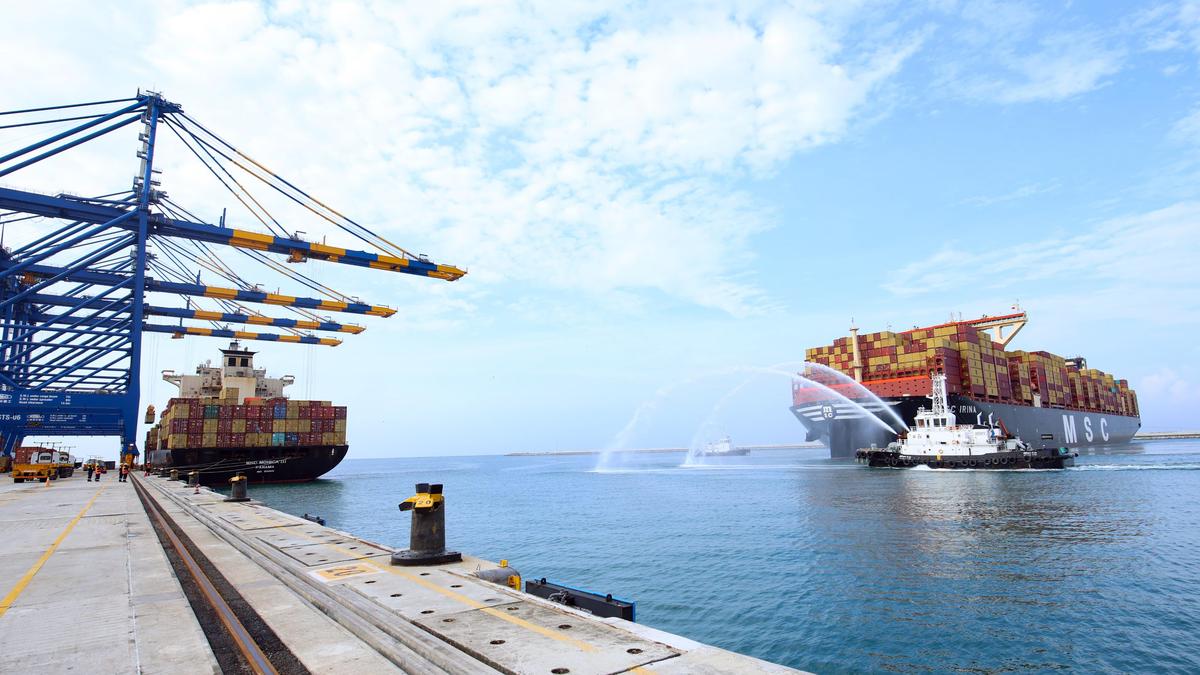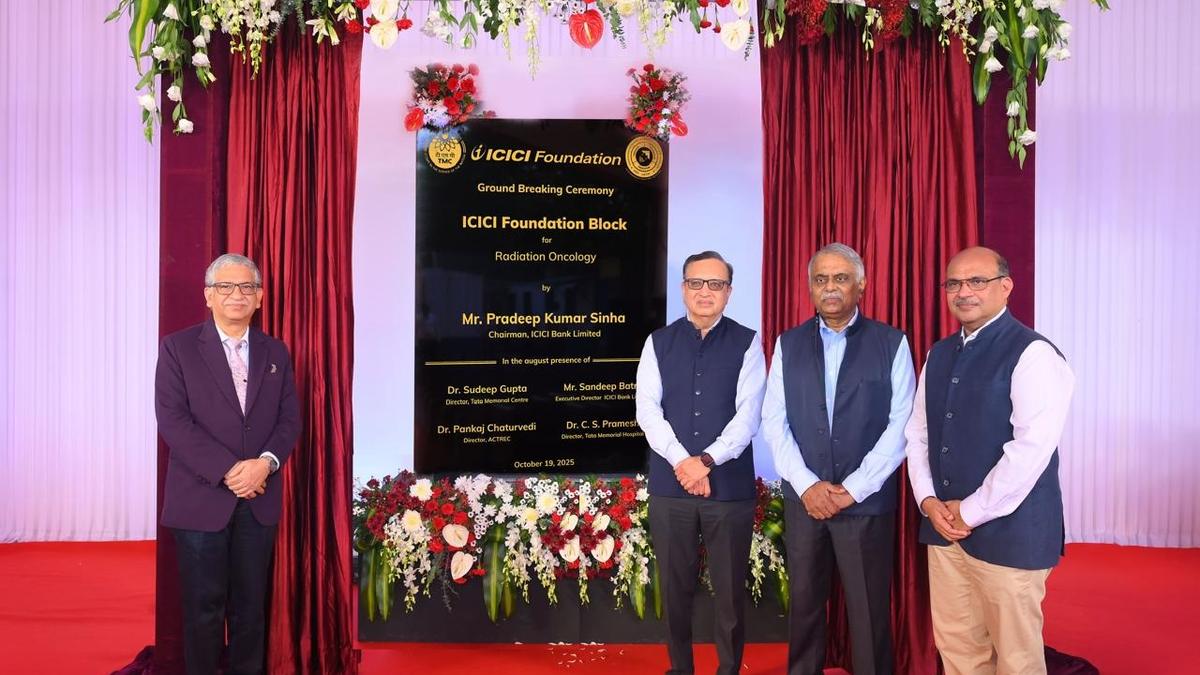World’s largest container vessel, MSC IRINA, reaching Vizhinjam International Seaport, in Thiruvananthapuram. File
| Photo Credit: ANI
It was business as usual at the Vizhinjam International Seaport as the first deep-water container transshipment port in India celebrated its first anniversary of the commercial berthing of the maiden mother ship, MV San Fernando, owned by SFL Corporation Ltd. and chartered by Maersk (AP Moller Group), Denmark, carrying cargo from the Xiamen Port in China, on Saturday (July 12, 2025)
Although the formal commercial commissioning of the port took place on December 3, 2024, the port began its limited-scale operations on July 12, 2024, after a ceremonial reception for the first mother vessel.
In just one year, Vizhinjam emerged as a symbol of India’s maritime might and technological and infrastructural leap by handling around 395 ships, including 23 ultra-large container vessels—most notably, MSC Irina, the world’s largest container ship, which docked in India for the very first time—and handling 8.4 lakh TEUs (twenty-foot equivalent units) of cargo, scripting a new milestone in the global port development benchmarks. This underscores the prowess of the Vizhinjam, as it has become one of the few ports globally to operate at full capacity within months of launch, a rare achievement.
Achieving 100% capacity utilisation within a few months of commencing commercial operations, the Adani Vizhinjam Ports Private Limited (AVPPL), which developed the port as a Public-Private Partnership (PPP) with the State government, is set to undertake the second and third phase development of the port by the end of September or the beginning of October. As part of the expansion of the project, the breakwater of the port will be extended by 1 km from the existing 3 km-long breakwater structure.

Additionally, the berth in the port will be extended by 1.2 km from the existing 800 meters, along with the development of container yards and related infrastructure. Materials required for the port work have already been procured, and the work on the second and third phases, for which the port concessionaire will make an investment of about ₹10,000 crore, once the Arabian Sea becomes calm after the peak monsoon season, said sources. The port developer would also increase the number of cranes from the current 32 to 90, including 20 ship-to-shore cranes. The expansion of berth will allow the port to facilitate the berthing of five mother vessels at a time from the existing two.
The port has already created 2000 employment opportunities and is expected to create more employment as it is set to grow into the gateway to India’s maritime supremacy—anchoring the country’s vision of becoming a global logistics powerhouse. However, one year into operation, the port could not start the EXIM trade from here due to a lack of road and rail connectivity to the port, which is the main shortcoming of the port now.
As per the existing schedule, the rail and road connectivity will be completed by 2028, although a road being developed from the port concessionaire to connect the port with the National Highway is expected to be completed in three months. The full potential of the Vizhinjam port can be tapped for the EXIM community when freight transport reaches the point where it can be transported by land and rail from the port. At present, the port only facilitates transshipment of cargo from here by sea.
Published – July 12, 2025 01:43 pm IST





